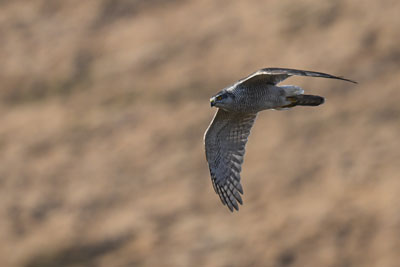Peak District Bird of Prey Initiative to close as persecution cases continue
This is an archived press release
Monday 24 April 2023
UPDATE: May 2024 - The National Park Authority can confirm that it has no affiliation with any groups currently operating under the name of ‘Peak District Bird of Prey Initiative’
 The Peak District Bird of Prey Initiative is to close, with differing views among the group's stakeholders and continued cases of persecution within the region leading to the initiative 'no longer being able to deliver meaningful change' - according to the National Park Authority, convenors of the initiative.
The Peak District Bird of Prey Initiative is to close, with differing views among the group's stakeholders and continued cases of persecution within the region leading to the initiative 'no longer being able to deliver meaningful change' - according to the National Park Authority, convenors of the initiative.
Set up in 2011 by the National Park Authority, the initiative’s goal was for populations of the region's key birds of prey or ‘raptors’ to be returned to levels last seen during the 1990s, and the re-establishment of hen harrier as a regularly breeding species.
The Peak District has historically been home to populations of iconic species such as the peregrine, goshawk, merlin - the UK's smallest raptor - and the hen harrier, one of the most persecuted birds of prey in the country. A supporting cast of other raptors includes the short-eared owl, with increasing sightings of red kites and ospreys.
Despite more than a decade of the initiative, which included representatives from the landowning and gamekeeping community, experienced raptor surveyors, conservation groups, the police and other bodies, populations of many of the key species have not increased at the rates initially hoped for with some seeing no improvement at all. Whilst hen harriers have returned to the area, successful breeding currently remains limited.
Those involved in the annual surveying of raptors within the study area - largely comprising the National Park's 'Dark Peak' uplands, have recently stated they no longer felt they could continue supporting the group. The RSPB stepped down as a member of the initiative in 2018.
Although progress has been seen with some species including the goshawk, and with the Initiative acknowledging that other species' population changes appear to be mirroring those of wider UK trends, direct persecution has remained a factor alongside the initiative’s decade-long existence.
Incidents of shooting, poisoning, trapping, nest destruction or the disappearance of satellite-tracked birds active within the Peak District have featured in every year of the initiative’s monitoring.
The National Park Authority believes that until these illegal activities are tackled, meaningful progress towards population increases in key species will not be possible.
Phil Mulligan, chief executive of the Peak District National Park Authority said: "It is with regret that we are closing the initiative after more than a decade of endeavours to safeguard our charismatic birds of prey that have a rightful place here in the National Park.
"Featuring at the very top of local ecosystems, these species like the hen harrier, peregrine and goshawk should be a flagship for landscapes and habitats at the heart of nature’s recovery.
"The fact that the work of the initiative has failed to reflect those target populations of some 30 years ago remains a cause for real concern, and it is without question that illegal persecution targeted towards some of these species is one factor behind this stuttering progress.
"I would like to extend my thanks to those who have put their time, energies and passion into the painstaking study, sharing of information and analysis of our raptor populations during the initiative’s existence, but we must now look at alternative ways to ensure our birds of prey have a future in the Peak District - free from the risk of illegal actions."
The Authority has confirmed that it will continue working with a range of local stakeholders on priority actions for the future of birds of prey in the Peak District and potential activities will be outlined as part of the Authority's 'Nature Recovery Plan' due to be released this summer.
Photo credit: Goshawk in the Dark Peak uplands - Tim Melling

